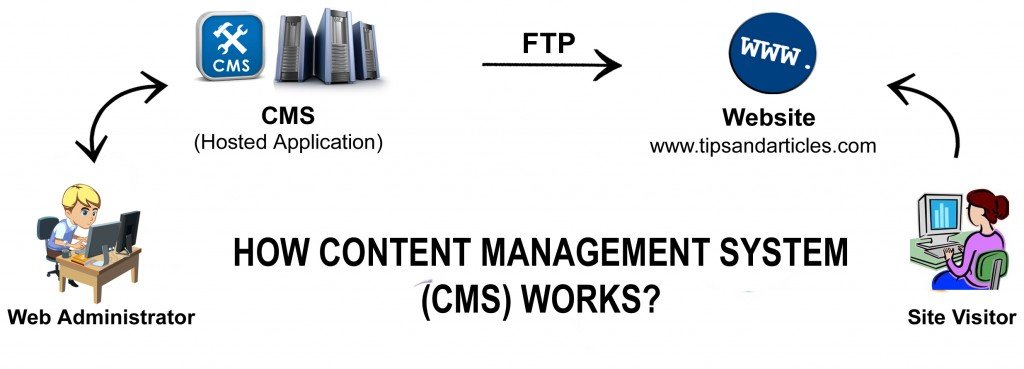What is Content Management System (CMS)? Introduction to WordPress as a CMS
Content Management System (CMS):
A system or a web application that is used to upload, edit, control and manage the content (data) of a website without technical training is called Content Management System (CMS). The management of a large website is not possible through manually coding. CMS is designed to make it easy for non-technical users (bloggers) to adding, editing and managing a website. Publishing, format management, making content searchable and indexing at the most basic level, security settings, specifications of keywords, search documents, retrieval and other metadata for the crawlers of Search Engines are the features of a CMS. Additional plugins are available to increase the features and performance of a CMS. Website contents can be easily uploaded, editing and managed by using the user-friendly CMS.
A CMS consists of two elements: Content Management Application (CMA) element allows the content manager / website publisher / author to manage the creation, modification, removing the contents from a website without knowing Hypertext Markup Language (HTML) and others expertise. Contents are easily added and updated with the some clicks of a button. While Content Delivery Application (CDA) elements compiles the information to update the website.
WordPress:
WordPress is an online, open source website creation tool written in PHP. WordPress is the easiest and a powerful website content management system today. Millions of websites, music and videos blogs, news & fashion outlets and celebrities are using WordPress. WordPress is used for any kind of website, from a simple & small blog to a full-featured large business website. No need of any coding, designing & developing skills to create a professional website in WordPress. Website designs are called “themes”. By using the themes, it’s easy to build a website without knowing about HTML and coding. WordPress is completely portable and can be move it at any time.
First version of WordPress was released in 27th May, 2003 as an online and open source website creation tool built on PHP and MySQL and licensed under the GPLv2 (General Public License). GPL license is a free, copyleft license for software. WordPress is dynamic content management system and creates the web pages dynamically. WordPress needs a web server with PHP and MySQL to run. WordPress is not an absolutely free CMS, it has following possible expenses:-
- Domain name
- Hosting
- Plugins
- Premium Themes
Top Content Management Systems:
Dozens of CMS are available for website owners to create the full-featured websites but top Content Management Systems (CMS) are as under:-
- WordPress (Free, PHP-based)
- Joomla (Free, PHP-based)
- Drupal (Free, PHP-based)
- ExpressionEngine (depending on license, PHP-based)
- TextPattern (Free, PHP-based)
- Contao (Free, PHP-based)
- SilverStripe (Free, PHP-based)
- Umbraco (Free, .NET-based)
- Concrete5 (Free, PHP-based)
- Cushycms (depending on feature set, hosted)
WordPress.com
WordPress.com is the hosted version of WordPress that runs the websites on the official WordPress server. Bloggers must be aware of a few limitations to wordpress.com. Pre-installed themes and no use of Plugins are the limitations of this version. Almost everything on wordpress.com is free. WordPress.com is a service that takes care of all the hosting for a website publisher. By using the wordpress.com, there is no need to download software, purchasing of hosting plan from a web host company or purchasing a premium themes or plugins etc.
WordPress.org
For self hosted or paid hosted websites, WordPress can be downloaded for installation on a web server from wordpress.org. It is self-hosted version in which website publishers are needed to download the free WordPress software from wordpress.org to install on a web server. By using this version, a website owner has a complete control of the functionality and design of his website. Content managers can add Plugins and themes to make the better performance of site.





